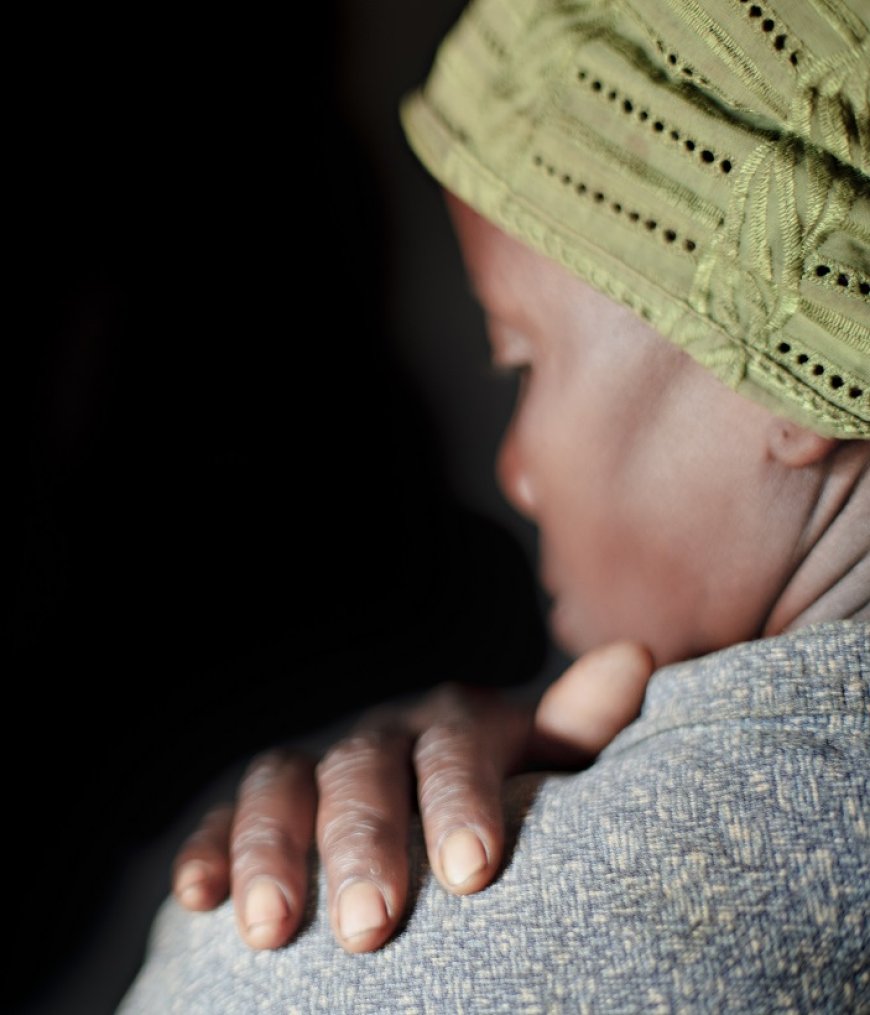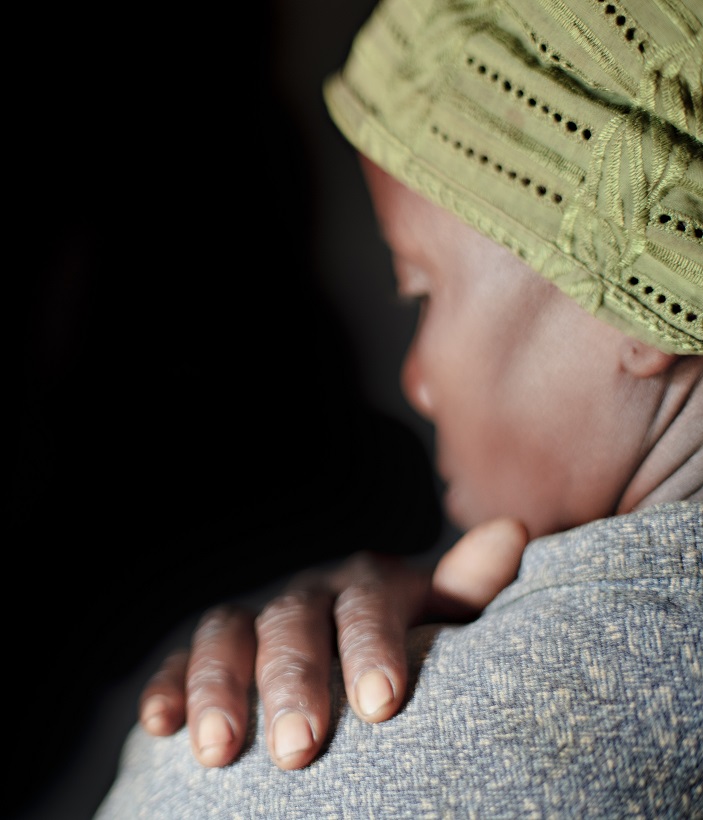Sexual violence in conflict and weapons: unpacking the links for better prevention
Sexual violence in conflict and weapons: unpacking the links for ... Blogs | International Committee of the Red Cross

Sustainable Development Goals (SDGs) and Sexual Violence in Conflict: Unpacking the Links for Better Prevention

Introduction
It’s often said that sexual violence is a weapon of war, but the actual weapons used to perpetrate these crimes are rarely discussed. Based on recent research, Hana Salama, Researcher with the Gender and Disarmament programme at the United Nations Institute for Disarmament Research (UNIDIR), explains how the proliferation of small arms and light weapons (SALW) is linked to sexual violence in conflict and encourages practitioners and policy makers to better consider arms-related risks and integrate gender-responsive arms control and disarmament measures into efforts to address and prevent sexual violence in conflict.
Sexual Violence in Sudan
In the capital of Sudan, Khartoum, reports of women being raped and assaulted are escalating. Since the armed conflict between the Sudanese Armed Forces and Rapid Support Forces began in April 2023, the UN Joint Human Rights Office in Sudan has received credible reports of 45 incidents, involving at least 95 victims, including 75 women, one man, and 19 children. Reports are mainly coming from Khartoum State and the Darfur and Kordofan regions. In one case, as many as 20 women were reportedly raped in the same attack. The Unit for Combatting Violence against Women under Sudan’s Ministry of Social Development, led by Sulaima Ishaq, also continues to receive reports of sexual violence. It has documented at least 60 alleged cases in the capital, Khartoum, 43 in the South Darfur region, and 21 in West Darfur as of mid-August. According to Ishaq, the cases reported represent a severe underestimate of what is actually happening.
The majority of the documented cases in Sudan referred to “armed actors” as perpetrators. However, the “arms” or types of weapons used in these incidents are rarely reported. “Most of the rape testimonies provided by survivors are done under threat of weapon either outside the home or inside their home or after kidnapping and forced sexual slavery. Some survivors had actually been beaten by the weapon as they described being kicked on the head by the rifle handle,” reported Ishaq.
The Link Between Weapons and Sexual Violence
This situation is not unique to Sudan. According to a new report by UNIDIR, in six countries where disaggregated data on weapons was available, approximately 70% to 90% of sexual violence incidents are reported to involve weapons, particularly firearms. These numbers demonstrate that there is an intimate relationship between the proliferation of small arms and sexual violence in conflict. Not only are weapons and ammunition used by perpetrators to commit rape, threaten or coerce individuals into sexual acts against their will, and injure and kill survivors and victims of sexual violence, their proliferation is one of the factors that fuels armed conflict and propagates the conditions that lead to the normalization of sexual violence in a conflict. In fact, armed groups, including criminal organized groups, often take advantage of the breakdown in governance and border security in a conflict to traffic persons, under the threat of weapons, for the purpose of sexual exploitation.
Sexual violence has also been linked to the illicit trade of weapons. Experts interviewed during the course of the research observed that in some cases women and girls may be forced to participate in illicit cross-border trade as carriers or brokers of weapons and that sexual violence was reportedly used to coerce them into compliance.
Integrating Arms Control and Disarmament Measures
Despite the clear links, the issue of weapons proliferation and sexual violence in conflict are rarely discussed together and often treated in silos. This is a missed opportunity. Arms control and disarmament measures can strengthen efforts to prevent these violations in Sudan and in other places affected by armed conflict.
Before Armed Conflict
Early warnings of sexual violence in conflict could be enhanced by including indicators that factor in gender-disaggregated data on the impact of armed violence, weapons possession, use, and misuse, as well as information on weapons accumulation by armed groups, diversion, and illicit trafficking of arms and ammunition. These factors, combined with other indicators related to armed groups’ behaviors, can enhance the assessment of the risks of sexual violence. Indicators on gender-sensitive firearms licensing and the number of firearms held by civilians could also be included, as past research has demonstrated that in certain conflicts, sexual violence may be more frequently perpetrated by civilians.
During Armed Conflict
While documenting incidents of sexual violence is generally challenging, as many survivors are unable or unwilling to report to law enforcement authorities or service providers, improving data collection by systematically collecting disaggregated data – including on the type of weapon involved in the incident – can be crucial to inform responses. For example, data on weapons is relevant to humanitarian actors on the ground to inform different protection strategies such as setting up protection sites, weapon-free zones, or protective patrols, which in specific contexts, such as in South Sudan, have led to a reduction of incidents of sexual violence.
The information on weapons can also be used to inform engagement and advocacy on arms-related issues with armed groups by the ICRC or the UN through the UN Special Representative on Sexual Violence in Conflict.
In some cases, targeted arms embargoes as part of sanctions applied to state or non-state armed groups or individuals who are listed as known perpetrators of sexual violence could be considered. They have the potential to reduce the risk of sexual violence committed with weapons by restricting access to weapons to known perpetrators and reducing the overall availability of weapons which perpetuate the conditions that may lead to an escalation in sexual violence.
Transitioning out of Conflict
When transitioning out of armed conflict, weapon collection programmes, including as part of Disarmament, Demobilisation, and Reintegration (DDR) programmes or Community Violence Reduction (CVR) programmes, can help reduce the availability of weapons. These measures should also ensure the participation of various stakeholders, including women’s and sexual violence survivor groups, where appropriate, to ensure that they are far-reaching and can integrate prevention messages on sexual violence.
Other measures, such as weapons and ammunition management (
SDGs, Targets, and Indicators Related to Sexual Violence in Conflict and Weapons
1. SDGs Addressed or Connected to the Issues Highlighted in the Article
- SDG 5: Gender Equality
- SDG 16: Peace, Justice, and Strong Institutions
The article discusses the link between sexual violence in conflict and the proliferation of small arms and light weapons. This connection is relevant to SDG 5, which aims to achieve gender equality and empower all women and girls. It is also connected to SDG 16, which focuses on promoting peaceful and inclusive societies for sustainable development, providing access to justice for all, and building effective, accountable, and inclusive institutions at all levels.
2. Specific Targets Under Those SDGs Based on the Article’s Content
- Target 5.2: Eliminate all forms of violence against all women and girls in public and private spheres
- Target 16.1: Significantly reduce all forms of violence and related death rates everywhere
- Target 16.3: Promote the rule of law at the national and international levels and ensure equal access to justice for all
The article highlights the need to address sexual violence in conflict and its connection to the proliferation of weapons. Achieving these targets would contribute to eliminating violence against women and girls, reducing violence rates, promoting the rule of law, and ensuring equal access to justice.
3. Indicators Mentioned or Implied in the Article
- Gender-disaggregated data on the impact of armed violence, weapons possession, use, and misuse
- Information on weapons accumulation by armed groups, diversion, and illicit trafficking of arms and ammunition
- Indicators on gender-sensitive firearms licensing
- Number of firearms held by civilians
- Data on the type of weapon involved in incidents of sexual violence
The article suggests that these indicators can enhance the assessment of the risks of sexual violence in conflict and inform responses. They can also be used to measure progress towards the targets mentioned above.
Table: SDGs, Targets, and Indicators
| SDGs | Targets | Indicators |
|---|---|---|
| SDG 5: Gender Equality | Target 5.2: Eliminate all forms of violence against all women and girls in public and private spheres | – Gender-disaggregated data on the impact of armed violence, weapons possession, use, and misuse – Indicators on gender-sensitive firearms licensing – Number of firearms held by civilians – Data on the type of weapon involved in incidents of sexual violence |
| SDG 16: Peace, Justice, and Strong Institutions | Target 16.1: Significantly reduce all forms of violence and related death rates everywhere Target 16.3: Promote the rule of law at the national and international levels and ensure equal access to justice for all |
– Gender-disaggregated data on the impact of armed violence, weapons possession, use, and misuse – Information on weapons accumulation by armed groups, diversion, and illicit trafficking of arms and ammunition – Data on the type of weapon involved in incidents of sexual violence |
Behold! This splendid article springs forth from the wellspring of knowledge, shaped by a wondrous proprietary AI technology that delved into a vast ocean of data, illuminating the path towards the Sustainable Development Goals. Remember that all rights are reserved by SDG Investors LLC, empowering us to champion progress together.
Source: blogs.icrc.org

Join us, as fellow seekers of change, on a transformative journey at https://sdgtalks.ai/welcome, where you can become a member and actively contribute to shaping a brighter future.







